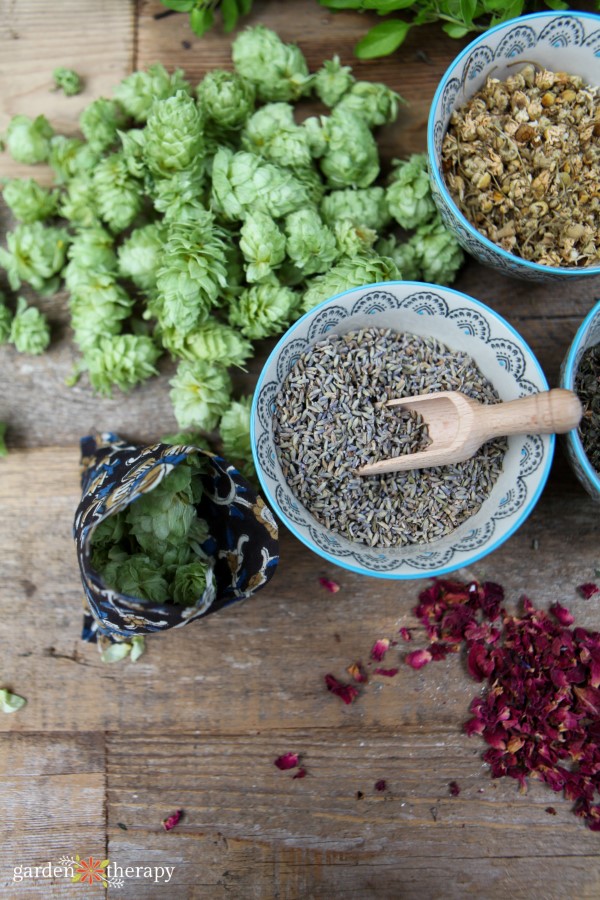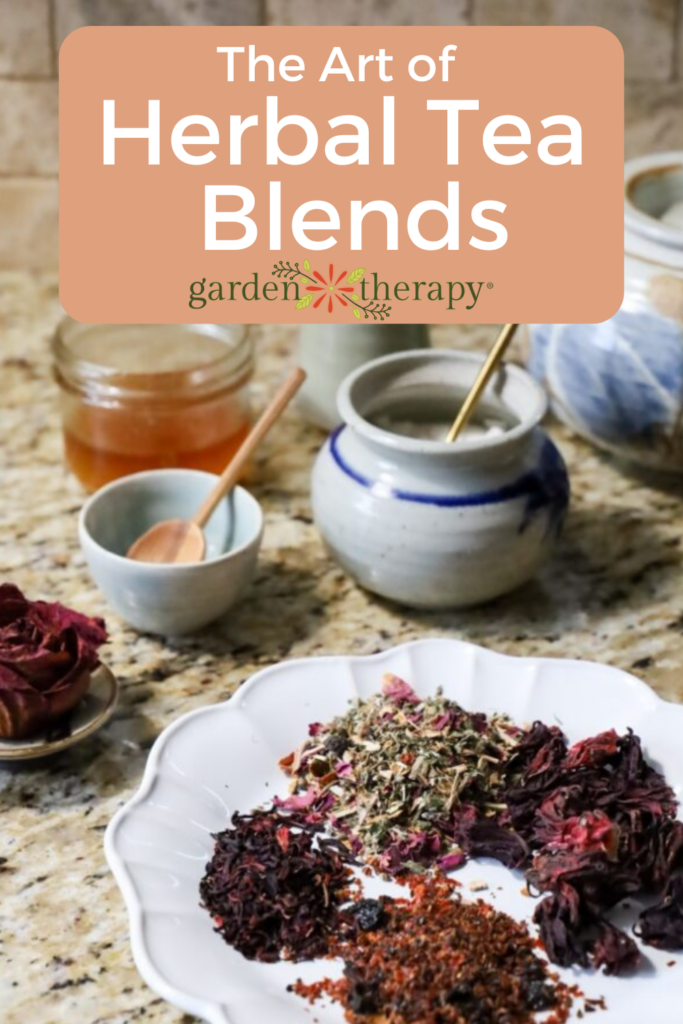Have you ever tried tea blending? Making your own herbal tea blends is an excellent but gentle way to start experimenting with herbs’ properties. Customize a blend to suit your taste buds and needs, or try out one of my tea blend recipes.
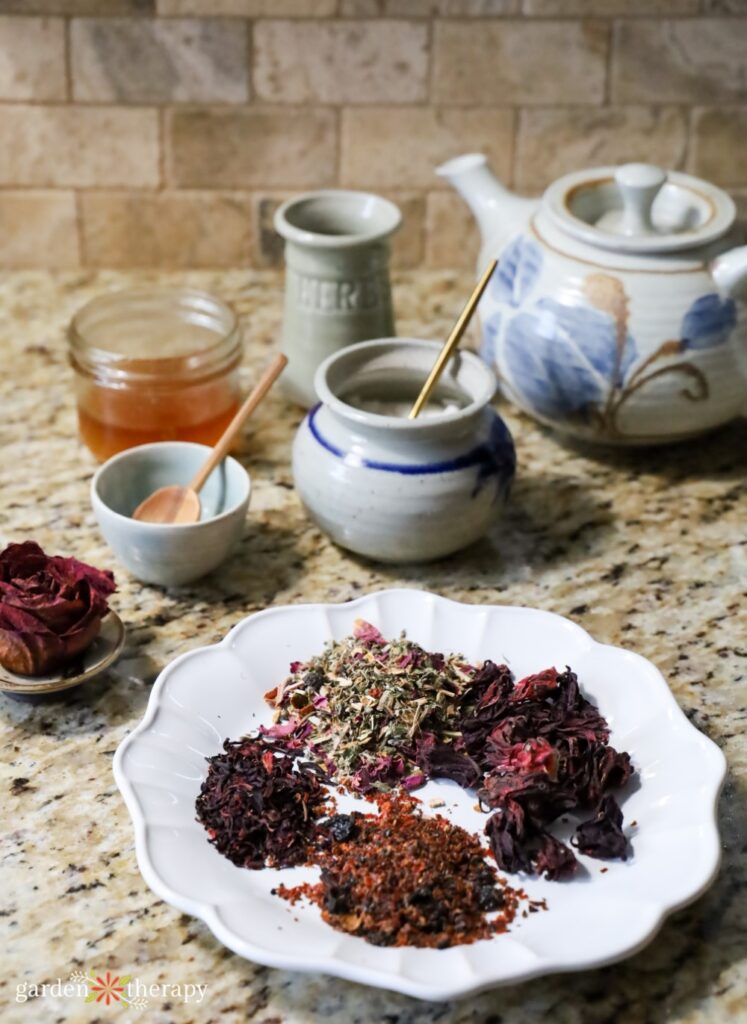
My friends know that I’m most at peace when I have a cup of tea in my hands. I’ve never been much of a coffee drinker, preferring my morning matcha and my herbal teas. And in the afternoon, you’ll find me drinking some iced hibiscus tea.
I’m a tea addict, and I’m very much okay with it.
There’s always a tea for the different times of the day. With the right selection of herbs, you can use tea as a gentle way to control your moods and energy levels. That’s the beauty of herbal tea blending!
If you’re new to making tea mixtures, they’re a fun and gentle way to explore herbs. You can try your hand at making your blends or try a tea from my tea blends list below.
Here’s what we’ll be covering today!
- Dip Your Toes in Drinking Herbal Tea
- The Basics of Tea Blending
- My Personal Go-To Tea Mixing Base
- Determining Herbal Tea Blend Ratios
- 5 of My Favourite Herbal Tea Blend Recipes
- Nourishing Vitamin and Mineral Tea
- Ingredients
- Peaceful Heart Tea
- Ingredients
- Tummy Tea
- Ingredients
- Energy Tea
- Ingredients
- Sleep Tea
- Ingredients
- More Ways to Enjoy Herbal Tea
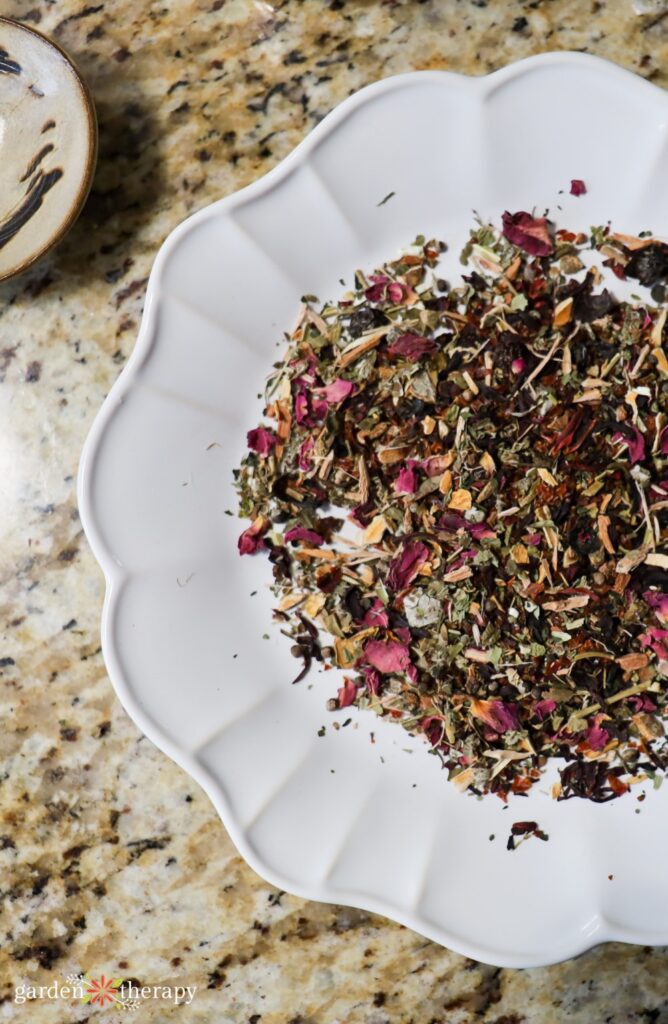
Dip Your Toes in Drinking Herbal Tea
Many moons ago, I did a herbal tea training with a herbalist, and I want to share one of the biggest tips they gave to the class: start with one herb.
Take the time to really sit with the first herb you want to try. This can be something you already know you like the flavour of, you have in large supply, or it has desirable properties.
Once you’ve chosen your tea, make a big jar of it. Take one big 1-litre Mason jar and pack it about a third full with your herb of choice. This is going to create a very, very strong tea.
Add the hot water, let it steep, and then strain it. Then, drink your strong tea throughout the day.
For a couple of days, you might drink solely motherwort tea. And one another, oat straw tea. But the idea here is that you’re getting a direct feeling of what each of these herbal teas does and how it affects your body.
When you’re reading herbal books and guides on the different herbs, you choose the ones that work for you and really test them out. It’s an ongoing learning process of getting to know the herbs and how your body reacts to them.
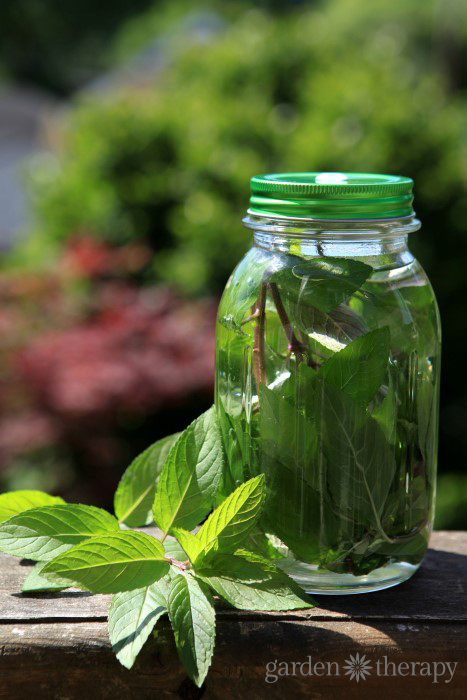
The Basics of Tea Blending
From a more fun standpoint, you can start making tea blends. It’s one of my favourite things to do since I have at least a couple of cups a day. But if you want to make your own blends, training yourself in herbal tea first is a good idea.
At the same time, teas are very gentle. If you mix several different herbs and some don’t resonate for you, you likely won’t have a strong negative reaction.
Most of them should be tolerable unless you have allergies. So, of course, be mindful of your individual aversions, sensitivities, and allergies to different plants.
But if you’re looking at them from a medical standpoint, you might find that different herbs work better for you. Say you’re making a sleepy tea blend like the one below. You may find that you don’t need chamomile but that the rose, hops, and peppermint actually do all the work for you.
Tea blends are a safe way to have fun with herbs and enjoy some really delicious and beautiful tea blends. I also love making custom herbal tea blends as gifts. Often, I make a little note to let them know what the tea is best for.
For instance, you could add wild rose petals or little rose petals from the garden for a romantic partner. Or if you’re giving it to someone who is really active, you can add hibiscus flowers.
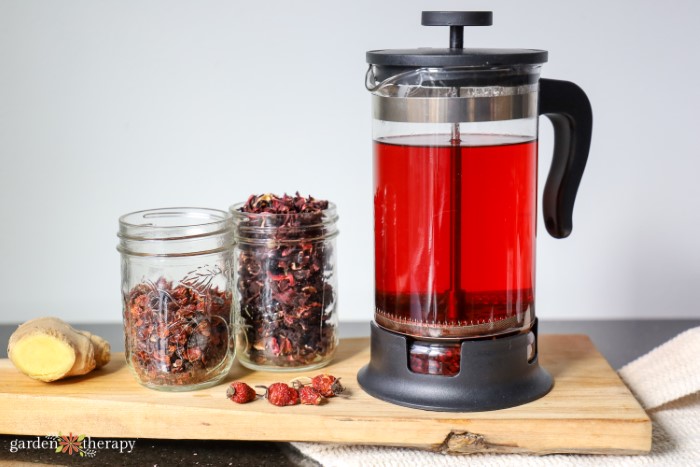
My Personal Go-To Tea Mixing Base
I drink A LOT of tea, most of which is actually iced tea. When I’m active, I like to make hibiscus iced tea to keep me hydrated. And when I’m out in the garden, taking a sip feels like I’m instantly revitalizing my body.
I will make one of the blends below and then make a tea mixture that is 1 part the blend, 1 part hibiscus flowers, and 1 part rose hips.
This creates a delicious herbal iced tea blend for the summertime. So, you can try tea blending to make a warm drink when you feel like cozying up, but also in the summer to hydrate and energize you.
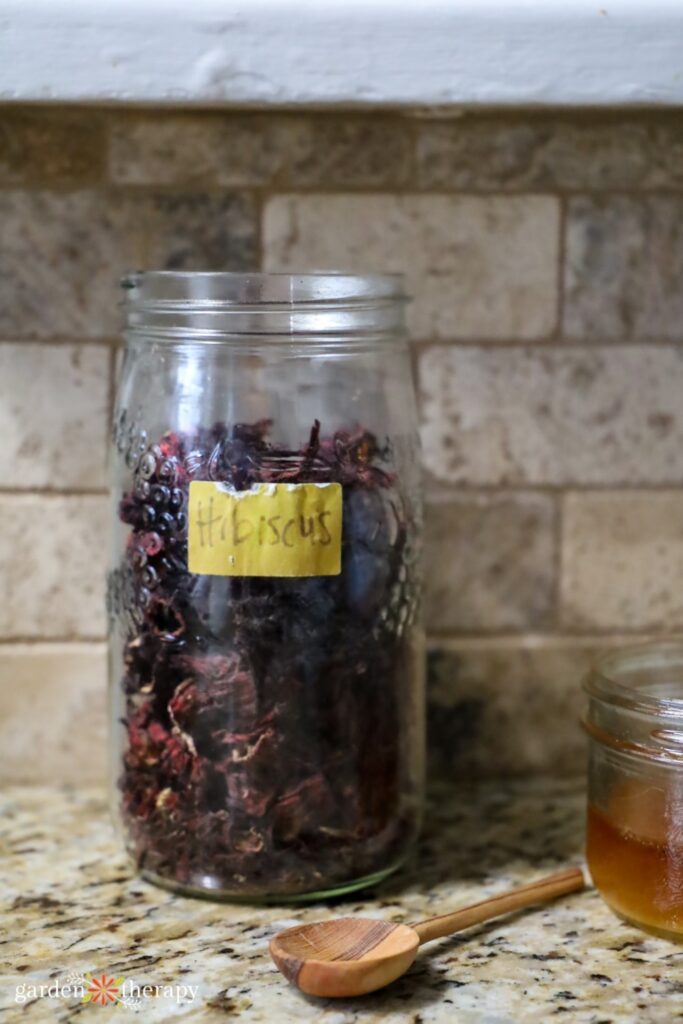
Determining Herbal Tea Blend Ratios
Finding the right ratio takes time and a few experiments before you find one you like. Start by making just enough for one cup of tea and noting the ratios you made. Next time, try a different ratio. Keep going until you’ve found one that resonates most with you.
In general, you want…
- 3 parts of your base ingredient
- 1-2 parts of your supporting ingredients
- ¼-1 part of your accent ingredients
Always use the same measuring scoop/set for each part so you get accurate ratios.

5 of My Favourite Herbal Tea Blend Recipes
If you’re new to tea blending, take inspiration from my list of teas. I rely heavily on these herbal tea blends, from when I have an upset stomach to when I want a boost of energy.
For more of my favourite herbs to grow for a tea garden, check out this post.
Nourishing Vitamin and Mineral Tea
This tea is like taking a multivitamin; it’s full of vitamins and minerals that can boost your meals by drinking as a warm tea. You can also add it as a third of your iced tea blends.
Ingredients
- 3 parts hibiscus: high in Vitamin C and aids in digestion. Has a fruity and tart taste. Make sure you get the edible variety of hibiscus!
- 2 parts nettle: nettle is a supergreen that is high in minerals and plant protein. One of the richest sources of minerals from edible plants. Has a salty, umami taste.
- 1 part alfalfa: incredibly high in important vitamins and minerals. Alfalfa also mimics the chemical and mineral makeup in hemoglobin. Used in TCM for urinary and digestive disorders.
- 1 part oat straw: the stem of the oat plant when it is still green. Nourishing herb full of protein, carbohydrates, vitamins, and minerals.
- 1 part chickweed: nutrient-rich herb. Clears lymphatic congestion and helps to clear water through the kidneys. Very fibrous and a weight loss folk remedy.
- 1 part orange peel: there are some bitter herbs on this list, so orange peel provides some nice citrusy flavour.
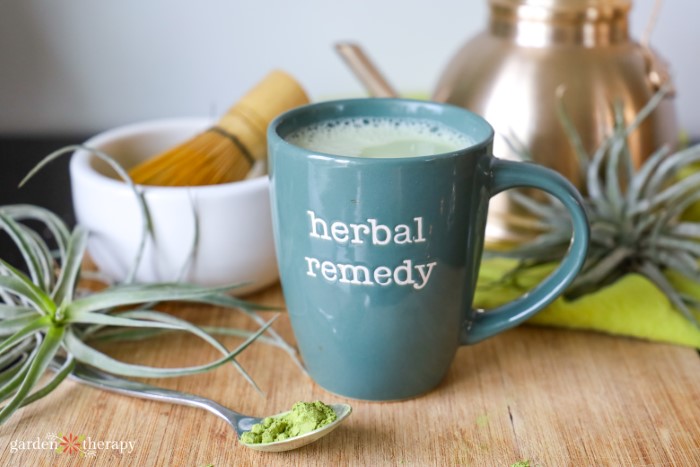
Peaceful Heart Tea
This tea helps to calm your heart and encourage a peaceful mind. It’s very flavourful, sweet, and aromatic. It also makes for a great gift for somebody who’s mending a broken heart.
Ingredients
- 3 parts chamomile: a powerful anti-inflammatory herb and a natural nervine to ease anxiety and tension.
- 2 parts passionflower: contains nerve-relaxing flavonoids to help calm the nerves and reduce anxiety.
- 2 parts rose hips: anti-inflammatory with a tart and zesty taste, high in vitamin C and antioxidants.
- 1 part cinnamon bark: distinct sweet flavour and warming effect. Antimicrobial and antioxidant properties.
- 1 part lavender: notable floral taste, as well as a mild sedative effect. Helps to alleviate stress and anxiety by relaxing the mind.
- 1 part rose: notable floral taste. Full of Vitamin C to help boost immunity. Eases menstrual cramps.
- 1 part mint: delicious and comforting flavour. It can help soothe a sore throat.
- ½ part stevia: for a hint of natural sweetness.
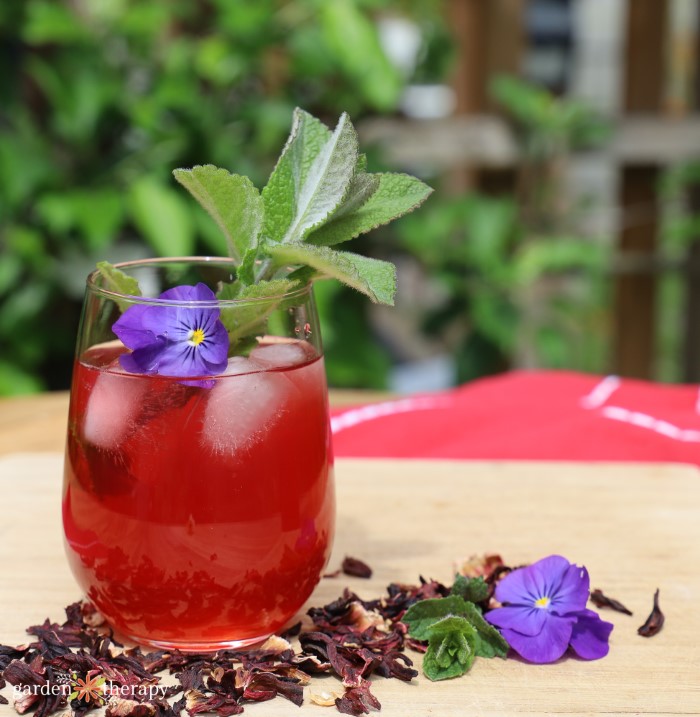
Tummy Tea
If you’re trying to soothe the tummy, tea blending can be risky business if you haven’t explored the herbs first. This herbal tea blend helps to cool and chill. Use it when you have an upset stomach or are experiencing bloating. It helps to improve digestion.
Ingredients
- 3 parts chamomile: anti-inflammatory herb used to decrease tension and ease anxiety.
- 2 parts calendula: another natural anti-inflammatory used for upset stomachs and to improve digestion.
- 1 part rosehip: high in vitamins and minerals. It has natural pectin, which is helpful for gut health and removing toxins from the body.
- 1 part peppermint: helps to reduce uncomfortable bloating and stomach pain caused by gas.
- 1 part fennel: helps to aid in digestion as well as menstrual cramps. Has a notable bitter, licorice taste.
- ½ part ginger: sweet and spicy taste. Warming quality helps to stimulate circulation and energy, which supports digestion and bile secretion. Also acts as an anti-spasmodic to alleviate nausea and morning sickness.
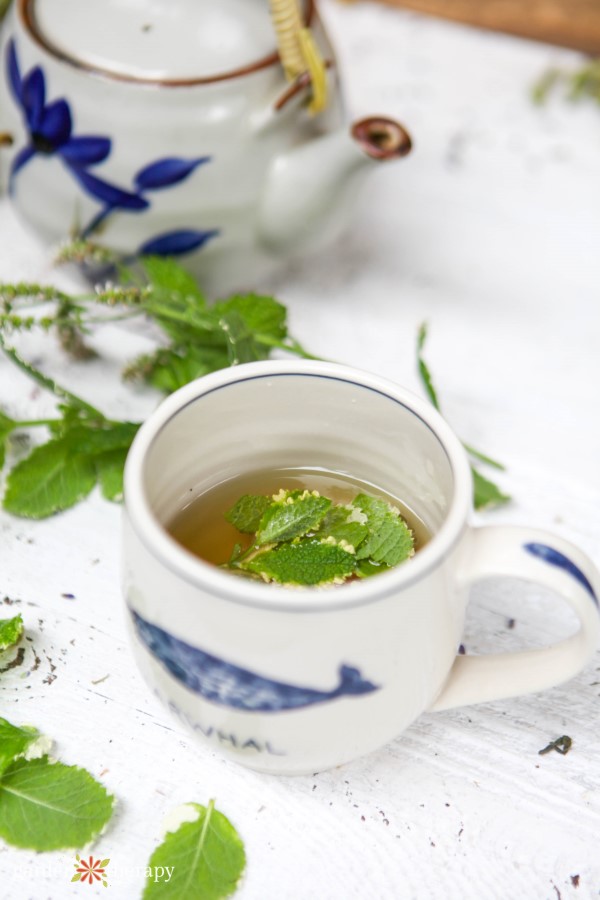
Energy Tea
Mixing herbs to a nice green tea can help build energy that tapers off slowly, as opposed to the caffeine in coffee, which spikes quickly and then drops. The caffeine in green tea is more of a gentle rise, and when supported by other herbs, it can be really energetic.
Ingredients
- 3 parts green tea: contains caffeine, theophylline, and theobromine, which are all natural stimulants.
- 2 parts spearmint: notable minty flavour, known to improve alertness and memory recall. Good for a boost of mental or physical energy.
- 2 parts nettle: has a high nutritional content, which can help boost energy and maintain blood sugar levels.
- 1 part ashwagandha (optional for extra energy): used to help the body cope with stress. It’s actually quite a calming root and works great to soothe and strengthen the nervous system. It’s known to restore strength and vitality, and can enhance athletic performance.
- 1 part ginseng (optional for extra energy): natural adaptogen, that boosts the body’s resistance to physical and emotional stress. It’s a mild stimulant, known for improving mental and physical capacities in moments of tiredness.
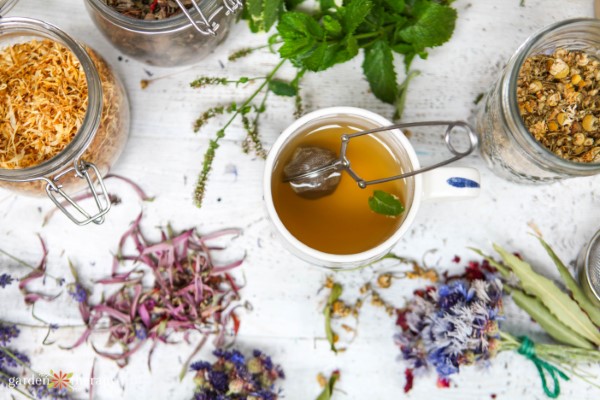
Sleep Tea
I really love this sleepy tea blend! It takes the same idea of my dream pillow and puts it in a tea form. I don’t drink much hot water and tea before I go to bed, so I tend to sit and sip this a few hours before sleep and just after dinner in a small amount.
Ingredients
- 4 parts hops: contains methyl butanol, a natural chemical that induces sleep.
- 1 part chamomile: anti-inflammatory herb known for promoting relaxation and easing anxiety.
- 1 part catnip: the taste is similar to mint but earthier with slight citrus notes. Helps to promote relaxation.
- 1 part rose hip: high in Vitamin C to help boost our immune system and stimulate white blood cell production.
- 1 part raspberry leaf: rich in vitamins and minerals, a rich source of calcium and iron, and helpful in relieving women’s issues. It has an astringent taste similar to black tea.
- ½ part stevia: hops can be quite bitter, so this adds some natural sweetness.
